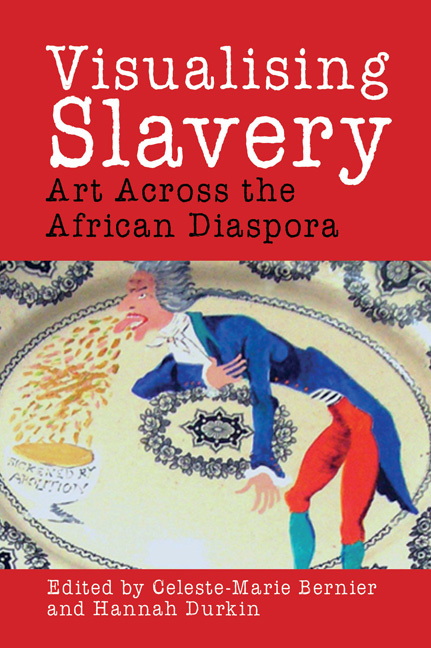Book contents
- Frontmatter
- Dedication
- Contents
- List of Illustrations
- Acknowledgements
- Introduction: ‘Inside the Invisible’: African Diasporic Artists Visualise Transatlantic Slavery
- Part I Slavery and Memory in Contemporary African Diasporic Art
- Chapter 1 Lost and Found at the Swap Meet: Betye Saar and the Everyday Object
- Chapter 2 Preserves
- Chapter 3 What Goes without Saying
- Chapter 4 Spectres in the Postcolonies: Reimagining Violence and Resistance
- Chapter 5 Strategic Remembering and Tactical Forgetfulness in Depicting the Plantation: A Personal Account
- Part II Historical Iconography and Visualising Transatlantic Slavery
- Part III African Diasporic Monuments and Memorialisation
- Part IV Contemporary Legacies in African Diasporic Art
- Afterword: Against the Grain: Contingency and Found Objects
- Notes on Contributors
- Index
- Platesection
Chapter 3 - What Goes without Saying
from Part I - Slavery and Memory in Contemporary African Diasporic Art
- Frontmatter
- Dedication
- Contents
- List of Illustrations
- Acknowledgements
- Introduction: ‘Inside the Invisible’: African Diasporic Artists Visualise Transatlantic Slavery
- Part I Slavery and Memory in Contemporary African Diasporic Art
- Chapter 1 Lost and Found at the Swap Meet: Betye Saar and the Everyday Object
- Chapter 2 Preserves
- Chapter 3 What Goes without Saying
- Chapter 4 Spectres in the Postcolonies: Reimagining Violence and Resistance
- Chapter 5 Strategic Remembering and Tactical Forgetfulness in Depicting the Plantation: A Personal Account
- Part II Historical Iconography and Visualising Transatlantic Slavery
- Part III African Diasporic Monuments and Memorialisation
- Part IV Contemporary Legacies in African Diasporic Art
- Afterword: Against the Grain: Contingency and Found Objects
- Notes on Contributors
- Index
- Platesection
Summary
My interest in art and photography began before I was born with an encounter my mother [ground-breaking artist, historian and curator Deborah Willis] had with a book called The Sweet Flypaper of Life (1955) by Roy DeCarava and Langston Hughes. She was a 12-year-old girl in Philadelphia Public Library and it was the first time she saw images of African Americans presented as ‘normal’ people in everyday life in ways that she'd known them, in contrast to the images that she'd seen in history and popular culture. And that led her on a life-long journey to really investigate the history of photographic representations of African Americans. I was going through her stuff not long ago and I found a research paper that she'd written a proposal for in 1973, so three years before I was born, and it says, ‘I found no standard art history that refers to any Afro-American artist. References have led me to more references, which are scanty. I have written fifty letters to possible resources and have enthusiastic feedback by receiving letters sending invitations to visit special collections and libraries’. She wanted to do an independent photography project on the contribution of African Americans from 1840 to 1940. That research project went on to become her first book, Black Photographers 1840–1940, A Bio-Bibliography (1984), and she's since published almost three dozen books and won all kinds of awards. But what was really fascinating for me was how she, as a student, basically started to create almost a whole field of history and how we can recontextualise and re-understand the world by thinking about how African Americans were invested in investigating some of the more complicated scientific and intellectual pursuits even before the end of slavery, and what that says about agency and the consciousness of African Americans at that time.
So I really do see myself as following in her footsteps and sometimes we make work together. Here is a piece we did together in a show called Progeny called ‘Sometimes I See Myself in You’ [Plate 21]. I went to New York University to study photography for my undergraduate degree, and three years after I graduated my mother was hired and became the Chair of the Program for Photography and Africana Studies there. So I like to say I paved the way for her [laughter].
- Type
- Chapter
- Information
- Visualising SlaveryArt Across the African Diaspora, pp. 34 - 47Publisher: Liverpool University PressPrint publication year: 2016



